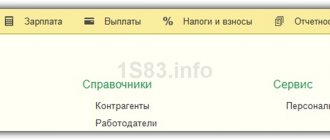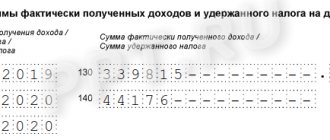What it is?
Not a single accounting document contains the term “13th salary”, because this is more of a colloquial term that does not have legislative support. On paper, this payment will appear as an end-of-year bonus or financial assistance.
It depends on the financial capabilities of the organization and the initiative of its leader, who decides whether to reward his subordinates.
It is extremely difficult to protest non-payment of a premium, since it is not mandatory.
Accounting can only draw a conclusion about the financial possibilities for bonuses after the end of the financial year (on the twentieth of December), so payments are often made on the eve of the New Year holidays . The thirteenth salary is the final annual income of the enterprise or the unspent salary fund.
Concept
All payments that are related to the payment of workers are regulated by labor legislation, namely the Labor Code. But it is precisely the concept of 13 salaries that is missing from it. Although this is not at all a reason to exclude payments of this nature.
The very essence of this term falls under a broader term, namely incentive payments. They are an amount established by management that is paid to a company employee in order to encourage work and motivate further efforts. The thirteenth salary is a financial motivator for employees, which is paid at the end of the year for their efforts throughout the entire 12 months. In this interpretation, the essence of this award is regulated by Art. 191 of the Labor Code, which talks about incentives for work.
The thirteenth salary is considered a type of bonus. It received its name due to the time of issue, which falls on the period after the 12th earnings of the year, for December.
https://youtu.be/iniYUW8dF-k
Who is it entitled to?
The procedure for bonuses is not established by Labor legislation, therefore, each organization has its own, regulated by local documents: regulations on bonuses, a collective agreement, and sometimes individual employment contracts.
Guided by them, the employer can issue an order either to award bonuses to all employees, or to reward individual employees who have shown the greatest conscientiousness during the year. Local bonus regulations usually provide for cases where employees may be partially or completely deprived of bonuses.
Such grounds include:
- violation of labor discipline;
- allowing cases of irresponsible attitude towards labor duties;
- existence of a valid disciplinary sanction;
- other cases provided for by local documents.
If a citizen believes that he was undeservedly deprived of a bonus at the end of the year, he can try to appeal the decision of his superiors in court.
You can see who can count on this payment in the following video:
Amount of cash payment
The formula for calculating such a bonus depends on the calculation procedure defined in the organization.
In this case, the manager is given complete freedom of action, and he can use, at his discretion, several possible options for how the amount of the payment will be calculated. Each method has its own advantages and disadvantages and is used solely at the discretion of management.
Fixed amount
Most often, a fixed amount bonus is used when the issue concerns the promotion of certain categories of workers. This method is not the best. This is due to the fact that the cost of living of people is constantly changing, that is, prices for essential goods, as well as for utilities, are subject to changes in most cases upward. That is, a situation may arise that the established amount may become very insignificant over time, which may lead to discontent among employees.
When this option is practiced, it would still be correct not to indicate the amount of the amount in the bonus clause. It is best to make a link to the manager’s order and indicate specific amounts in it. This will allow you to optimize funds taking into account current prices.
Percentage of salary
In this case, it is the salary that is taken into account, without taking into account previous bonus payments. This method is convenient for financial specialists, but extremely unprofitable for workers.
This is due to the fact that in this case the upper limit of payments is initially determined. That is, it will be impossible to increase the premium in this case. The only exception is the fact that a specific percentage may not be specified in the internal rules, but reflected only in the final order of the manager. This approach will allow you to adjust the amount of payment in one direction or another, depending on the quality of a person’s work.
Average annual earnings
In this case, the calculation formula is quite simple. All funds that a person received for the actual performance of duties in his position are summed up. The result obtained is divided by the number of months taken for the billing period. Since the thirteenth salary is issued at the end of the year, in most cases twelve months are taken as the unit of calculation.
This option is the most optimal and convenient for both parties to the labor relationship. In this case, everything will be quite simple to calculate, and the amount of earnings, in most cases, directly depends on the conscientiousness of the worker himself.
Formula and calculation procedure
The amount of bonus payments can be determined in the following ways:
- Establishment of fixed monetary amounts . Typically, this method is used when a decision is made to encourage a limited number of people.
- Calculation of the amount based on the average annual income and length of service of the employee . This method is painstaking and time-consuming. Usually, to calculate the amount due to a specific employee, information is taken about the income of his department for the year, the number of employees in the department, the share of each in total income and length of service. The output is two amounts: a bonus based on total earnings and a bonus for length of service. The final bonus will be calculated using the following formula:
- (average annual income bonus * seniority bonus) / 2.
So, for example, if the bonus for the average annual income of a third-class turner Ivanov was 6,000 rubles, and for his length of service - 5,000, then in the end he will receive (6,000 * 5,000) / 2 = 15,000 rubles.
- (official salary * 12 months) *%.
So, if it was decided to reward Ivanov with an amount equal to 20% of the annual salary, and his official salary is 10,000 rubles, then in the end he will receive a bonus in the amount of (10,000 * 12) * 0.20 = 24,000 rubles.
If you are interested in how to correctly calculate vacation pay, read this material. How an employee's sick leave is paid - see this article.
Calculation of 13 salaries: main points
The 13th salary in Russia is calculated as a bonus at the end of the year or financial assistance. In legislation, the rules governing the specifics of such cash payments are reflected not only in the Labor Code (TC RF), but also in the Tax Code (TC RF). The main provisions are contained in the documents:
- Article 255 of the Tax Code of the Russian Federation outlines the procedure for classifying wage expenses as expenses.
- Article 191 of the Labor Code of the Russian Federation specifies options for bonuses for employees (declaration of gratitude, issuance of a letter of encouragement or a valuable gift, cash payment).
- Chapter 34 of the Tax Code of the Russian Federation and Law No. 125-FZ of July 24, 1998 talk about the procedure for levying insurance premiums.
The appearance of such a name in everyday life is due to the fact that the amount of incentives was always practically equal to the monthly salary received.
Employees eligible for payment
Payments of cash incentives at the end of the year are now received mainly only by state employees and military personnel, as well as employees of the largest commercial companies (with a developed branch structure) that have a secure foothold in the market. But the company’s management is not required by law to issue the thirteenth salary, unless otherwise stated in documents such as:
- contract (employment) with the employee personally;
- the organization's regulations on bonuses;
- collective agreement of workers.
Local (that is, intra-company) acts and orders must clearly define the conditions and requirements, compliance with which will allow the employee to receive an additional cash payment at the end of the year. All interested parties indicated in them must be unconditionally familiarized with them against signature.
The grounds for refusing an employee the type of incentive in question or for significantly reducing its amount may be, for example, the following recorded facts:
- failure to comply with discipline, rules and norms of behavior during working hours;
- cases of irresponsible and negligent attitude towards duties;
- being on sick leave for more than a certain period of time during the year;
- penalties, reprimands, absence from work for unexcused reasons;
- the period of work is less than a year in the organization (if the calculation is made as a percentage of the annual salary);
- other events specified in the documents on the procedure and conditions when workers are entitled to the 13th salary.
Thus, those who have worked conscientiously for the benefit of the company throughout the year can expect to receive an additional payment. And even an employee going on maternity leave, despite not having worked a full calendar year. If an employee has not performed his job duties for the entire year due to being on maternity leave and subsequent child care, then he is not entitled to payments.
Upon dismissal, including at one’s own request, the calculation and payment of the thirteenth salary, in addition to the provisions of various documents (employment agreement, internal regulations), directly depends on the method of calculating such incentives.
https://youtu.be/O6FZf9GLhQU
It is important to know! If the calculation is made strictly at the end of the year, then the employer must transfer the money due to the former employee, since the year-end bonus is an integral part of the salary. Reduction also cannot be a basis for refusing to pay an employee an annual bonus, provided that all other requirements for receiving it are met.
Deadline for issuing bonuses
It is possible to find out what the financial performance indicators of an economic entity were at the end of the year (positive - there is income, or negative - there is a loss) only after the end of this period. In the last month, the main efforts of the management team have been more focused on summing up, planning and developing strategies and tactics for business development for the future. In this regard, the issuance of incentives to employees is usually carried out on the eve of the January holidays (on the twentieth of December) or immediately after them. If this period is not specified in the regulatory (internal) documents of the company, then the thirteenth salary can be paid on any other date, at the discretion of management.
Calculation of the due amount
The method for calculating amounts for the payment of annual bonuses in each individual organization under consideration is individual. In order to understand how the 13th salary is calculated, the appointed specialist (HR officer, accountant) must first, carefully and carefully study all the company’s regulations on this issue. And only after that proceed to further actions, namely:
- The manager is sent a calculation based on the results of the company’s work for the year.
- Based on the final indicators, a decision is made (or not) to accrue a bonus, and the procedure for calculating the amount due in the conditions of the current financial situation of the organization is determined.
- An analysis is being prepared of which of the employees is entitled to a salary and in what amount (at the same time, a list of those who, for one reason or another, do not have grounds for its payment is compiled).
- An order is created on behalf of the manager (must be certified by his personal signature) on the decision made to reward the employees specified in the administrative document with a certain monetary payment based on the results of work for the year.
An introductory sheet is attached to the order (a list of employees, their positions and calculated amounts for incentives), with which all persons indicated in it must be personally informed (under signature, with a date).
- Further 13, salaries are paid as established by the company regulations (through the cash desk in cash or to employee cards, for example, according to the Sberbank salary project).
Even if the documents do not contain information about bonuses at the end of the year, do not forget that financial capabilities and the desire of management are fundamental to rewarding employees. The most common options in practice for how the 13th salary is calculated will be presented below.
Fixed size
This method is the simplest of all, especially if the incentives are small. The total amount is determined to be distributed among some members, and not the entire team. Next, the size of the bonus is outlined as the manager decides, depending on the position, department, individual results and for each employee. An example of drawing up an order for incentives and an introductory sheet for it:
Payment as a percentage of salary
The size of the bonus will depend solely on the “personal” salary of each subordinate. Most often, the length of the actual period of work does not matter, and the new employee does not have to work the full year to receive additional pay. The calculation formula is quite simple; you only need to know the salary and bonus percentage approved by the organization for calculating the 13th salary.
For example:
Stepashkin L.R. got a job at OJSC "MultKino" in December 2020 (salary under the employment contract is 10,001 rubles). The regulations provide for the payment of the thirteenth salary at a rate of 10% and for a new employee it will be 12,001 rubles 20 kopecks, which will be calculated as follows:
10,001 (monthly salary) x 12 months (per year) x 10%
Average earnings per year worked
Without a calculator, an accountant will not be able to calculate the amount if management wants to reward everyone based on their personal merits. All days of granted vacations and periods of illness must be excluded from the calculation. This fair approach to calculating bonuses is based on the amount of actual annual income for actual time worked.
For example:
The employee was employed on October 29, his salary is 1,505 rubles per day. Annual incentive of 12%. In November, he was sick from the sixth to the ninth of the month (4 working days), and in December (from the 25th to the 29th) he took leave without pay. The bonus will be 6,501 rubles 60 kopecks and will be calculated as follows:
36 days (he worked in total for the year) x 1505 rubles (rate per day) x 12%
https://youtu.be/ty6oaYxF51o
Accrual procedure
The process of distribution of bonus money occurs in the following order:
- The financial service provides the manager with a report on the availability of “free” funds in the institution at the end of the year.
- Based on the information received, the manager makes a decision on its application. For example, about bonuses for your subordinates. Based on the size of the amount, he decides to pay the funds either to all (with the exception of persons who, as a punishment, may be deprived of their reward for work) or to individual employees who made the greatest contribution to the activities of the enterprise in the current year.
- Next, together with the head of the financial service, a decision is made on which calculation method will be most suitable under the conditions of a specific financial situation.
- An order of the institution is issued, which provides a list of employees to be rewarded and indicates the specific amount of remuneration. The document is certified by the manager.
- Then the accounting department transfers the amounts of money established by the order to the employees’ salary cards or personally issues the money. Payments are recorded in accounting records as a bonus or financial assistance.
The general procedure for calculating the 13th salary is similar in all organizations; its individual features are regulated by local acts.
It should be remembered that, like regular monthly wages, the 13th payment is subject to a tax levy of 13% (Part 2 of Article 255 of the Tax Code of the Russian Federation).
What is regulated by the 13th salary?
Since the Labor Code does not contain information about such payments for employees, limiting itself to a general definition of bonuses, a special salary is specified in other documents. The entrepreneur himself makes the decision whether to introduce this incentive or not, therefore, in the event of such a decision, he must regulate it by local regulations.
The provisions on the 13th salary may contain:
- in a collective agreement;
- separately issued Regulations on bonuses;
- the employment contract of each individual employee.
NOTE! The manager has the right to choose whether he will annually pay additional salaries to all employees or will please only those who have distinguished themselves.
Local regulations must specify not only the payment procedure, but also the grounds for deprivation of the bonus - full or partial. Management can provide for cases when employees who are guilty of:
- in systematic delays;
- in truancy;
- in any other violation resulting in disciplinary action;
- in violation of work discipline;
- have not achieved the required indicators.
The reason can be any that the employer deems necessary to declare.
IMPORTANT! Since bonuses are a voluntary initiative of management, it is impossible to protest them in the case of “illegal non-payment of the 13th salary”, unless the offended employee deems it advisable to go to court.
Payment upon layoff
A layoff is a serious stress for an employee, especially if it happens suddenly. Finding a new job can take a long time, and you still need to support your family. Fortunately, when being made redundant, a citizen has the right to financial support from the organization in which he worked:
- Payment of severance pay for two and sometimes three months until a new job is found.
- Compensation for vacation if it was not used.
- Payment of the 13th salary.
Even when the reduction does not occur at the end of the year and provided that the organization has the ability to pay a bonus, the former employee has the right to claim it if he has worked for at least a year in this institution.
In the case of payment of the thirteenth salary upon dismissal, it is also subject to tax (Part 9 of Article 255 of the Tax Code of the Russian Federation).
Deductions from the 13th salary
From the 13th salary, as well as from other income, personal income tax (personal income tax) is calculated and insurance contributions are collected. Alimony is deducted from this bonus.
During the USSR, when workers received their thirteenth salary, this brought additional income to their families. In today's (modern) time, there are very few enterprises left that are willing to make such payments to their employees. However, there are still enterprises that use the old proven method of rewarding their employees. An example of this is the ArcelorMittal Joint Stock Company, which is located in the city of Temirtau, Kazakhstan. This huge industrial enterprise ranks 8th among the largest enterprises in Kazakhstan. Not long ago they invested a decent amount of money in the purchase of heavy-duty equipment (BelAZ and KamAZ).
was the first to support the decision to sign the law of the President of Kazakhstan to raise wages from January 1, 2020. Employee income will also be indexed by fifty percent from the 2020 inflation rate. At the beginning of the first quarter of 2020, the company plans to restore the 13th salary, which is based on the results of the previous year (2018). Having calculated such increases and changes, the salary of the company's employees will increase by 8 to 10%, which will significantly increase the standard of living.
How the 13th salary is calculated
Since the law does not have a uniform regulation for calculating the annual bonus, this is determined by the employer. Typically, the manager sets the total amount that the payroll department distributes among the company's employees. In this case, accounting is based on internal rules and charter.
The provisions of the agreement specify the method of calculating incentive payments. But for some employees, the immediate supervisor or head of a department has the right to deprive them of their salaries. Managers also decide who should receive bonus payments. It can be:
- all employees of the enterprise;
- only those who have made a significant contribution to the development of the company;
- only qualified workers or those who already have a long overall work experience or long experience at a given enterprise.
Common methods of calculating incentive payments:
| Accrual method | Characteristic |
| Fixed amount | 13 salaries are calculated based on fixed amounts. With this calculation method, managers receive more than subordinates. |
| Payments based on salary | All employees are paid a bonus based on their salary. |
| Calculation by odds | When calculating bonuses, the length of service at a given enterprise or the number of days worked during the reporting year is taken into account. |
Each method of calculating incentive additional payments has advantages and disadvantages. For example, one of the main disadvantages of calculating a fixed amount is that it does not take into account actual days worked. And the advantage of accrual using coefficients is that they take into account the individual merits of the employee and personal contribution to the overall process.











